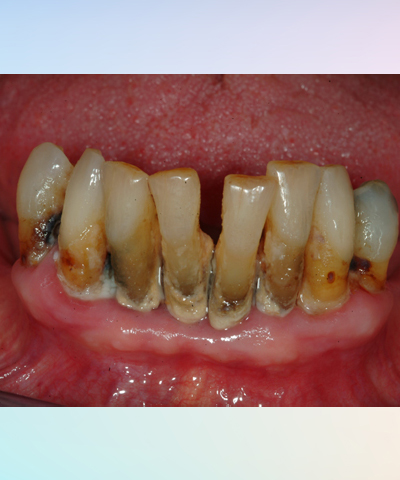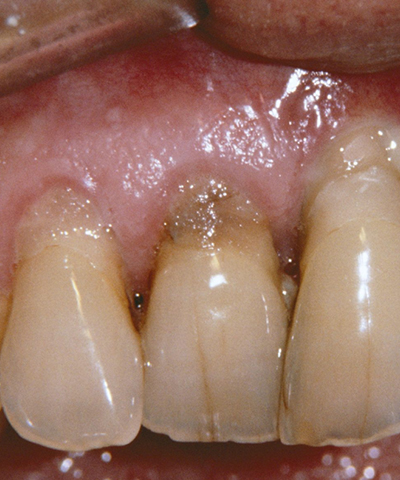

This speciality of Dentistry is referred to as "Periodontics"
Periodontics is a branch of dentistry that deals with the supporting structures located around the teeth which are known collectively as the periodontium. The term periodontics is derived from the Greek words "peri" meaning around and "odons" meaning tooth.
These periodontal structures include:
Gum Conditions We Treat:
- The gingiva or gums
- The alveolar or jaw bone
- The cementum which connects the tooth to the jaw bone by anchoring it to the periodontal ligament
- The periodontal ligament which holds the tooth in place in the jaw bone
Gum Diseases and Symptoms
Gum disease is often silent, meaning symptoms may not appear until the advanced stages. However, warning signs of gum disease include the following:
- Red, swollen, or tender gums or other pain in your mouth
- Bleeding while brushing, flossing, or eating hard food
- Gums that are receding or pulling away from the teeth, causing the teeth to look longer than before
- Loose or separating teeth
- Pus between your gums and teeth
- Sores in your mouth
- Persistent bad breath
- A change in the way your teeth fit together when you bite
- A change in the fit of partial dentures
Gingivitis
Gingivitis is the mildest form of periodontal disease. It causes the gums to become red, swollen, and bleed easily. There is usually little or no discomfort at this stage. Luckily, gingivitis is reversible with professional treatment and good at-home oral care.
Periodontitis
Untreated gingivitis can advance to periodontitis. With time, plaque
can spread and grow below the gum line. Toxins produced by the bacteria in plaque
irritate the gums and stimulate a chronic inflammatory response in which the body
essentially turns on itself, and the tissues and bone that support the teeth are broken
down and destroyed. Gums separate from the teeth, forming pockets between the teeth and
gums that can become infected. As the disease progresses, the pockets deepen and more
gum tissue and bone are destroyed. Eventually, teeth can become loose and may fall out
or need to be removed.
After your Doctor conducts a thorough assessment of your case, he or she may assign a
stage ranging from initial to severe that describes the severity of the disease and the
anticipated response to the treatment.


